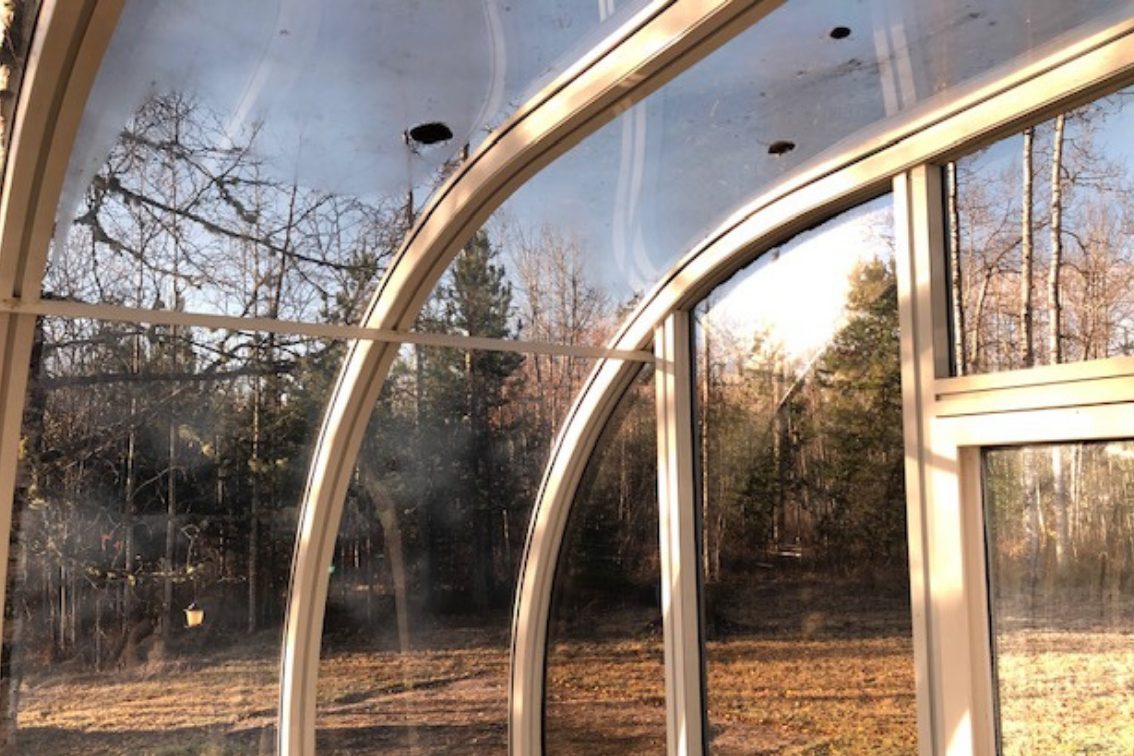How to Prevent Condensation in a 3-Season Solarium or Sunroom
A 3-season sunroom is a fantastic way to enjoy nature from the comfort of your home. However, as the seasons change, condensation can creep in, leaving windows fogged and sometimes even frosted. If you’ve ever dealt with dripping glass or chilly drafts, you know it can take away from the cozy vibe of your space. I’ve been there too, and over time, I’ve learned some simple but effective tricks to tackle condensation for good.
Why Does Condensation Happen in Your Sunroom?
Condensation in a sunroom usually happens when warm, moist air meets cooler surfaces, like single-pane glass. This temperature difference causes moisture in the air to condense, creating droplets—or in freezing conditions, frost—on your windows.
I first noticed it during late fall when the sunroom’s interior stayed warm during the day, but the nights were cold. Waking up to foggy or frosted glass became a daily annoyance, and I knew I needed a solution.
Winter Prep for 3-Season Sunrooms
If your sunroom isn’t designed for winter use, the first step is knowing when to “close it down” for the season. Leaving it open to warm air from your house during cold months can make condensation worse. Here’s what I do to prepare mine:
- Limit Entry During Winter: Every time you open the door to the sunroom, warm air escapes, adding moisture to the cooler space.
- Seal Off the Room: This step helps minimize temperature differences and reduces the amount of warm, moist air reaching the sunroom.
How to Reduce Moisture in Your Sunroom
Moisture is the main culprit behind condensation. Addressing this early on can make a big difference.
1. Identify and Eliminate Moisture Sources
Take a look around your sunroom for anything that might add to the humidity:
- Houseplants: While they’re beautiful, plants release moisture into the air. Consider moving them indoors for the winter.
- Pet Water Bowls and Aquariums: Relocate these to a more temperature-controlled area.
- Leaks or Seepage: Check for any leaks around windows or doors and fix them immediately.
2. Weather-Stripping to Seal Gaps
Sealing your sunroom with weather-stripping is an easy DIY solution that makes a noticeable impact.
- Choose the Right Material: I prefer spongy, tube-shaped weather-stripping for its flexibility and durability.
- Focus on Problem Areas: Seal gaps along door tracks, edges, and any areas where drafts sneak in.
This simple step prevents cold air from entering and warm air from escaping, reducing the conditions that lead to condensation.
3. Use a Dehumidifier
A dehumidifier is a game-changer for managing moisture in your sunroom.
- Automatic Settings: Choose a model with an auto shut-off feature to maintain a comfortable humidity level without constant monitoring.
- Temperature Limitations: Most dehumidifiers work best above 43°F (6°C), so keep this in mind if your sunroom gets colder.
I’ve been using one in my sunroom for a couple of winters now, and it’s amazing how much moisture it pulls from the air.
Dehumidifier with Auto Shut Off
Experience advanced home comfort with our quiet dehumidifier featuring auto shut-off, 7 colorful night lights, and versatile working modes. Perfectly compact for any room.
The Results: Clear Windows and a Cozy Space
Once I addressed leaks, sealed gaps with weather-stripping, and added a dehumidifier, my sunroom transformed. No more foggy windows, no more frost, and best of all, it’s a space I can enjoy again, even in the colder months.
Bonus Tip: Stay Consistent
Preventing condensation isn’t a one-time fix. Regularly check seals, keep moisture levels low, and take the time to prep your sunroom each season. It’s worth the effort for a space that’s clear, dry, and ready to enjoy year-round.
Share Your Experience!
Have you found any tricks for managing condensation in your sunroom? I’d love to hear your tips or success stories! Drop a comment below, and let’s keep the conversation going.


